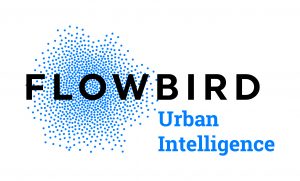 By Dennis Snow
By Dennis Snow
Three keys for delivering great service.
The term “customer service” evokes different images in people’s minds. One image could be that of friendly, smiling, helpful employees who go out of their way to serve you. Or it could be the opposite—indifferent, unfriendly employees who can’t wait for you to leave or hang up the phone.
Most people can recall many examples of poor customer service. Whether it’s the help desk employee who puts you on
hold for 20 minutes or the store cashier who engages in a personal conversation instead of ringing up your purchase, poor
customer service can make people feel frustrated and vow never to do business with that company again.
On the other hand, great service feels like a gift. It makes us want to continue to do business with an organization for the long haul. And that alone is the secret to business success—retaining customers by providing great customer service. With so much competition out there, customer loyalty is the single most important attribute your business can have. You achieve loyalty by doing the little things that make customers want to deal with you again and again and recommend you to their friends. The real difference is how a business makes its customers feel. If customers feel valued, most will remain loyal. If they feel under-valued, sooner or later, they will defect to a competitor.
Why They Leave
Several reasons exist for why customers defect from a company. They may move away, a competitor may lure them away, or they may leave because they are unhappy with the product. However, a recent study found that a whopping 68 percent of customers who defect do so because of poor service. That’s a sobering statistic. The study further noted how customers defined poor service: “an attitude of indifference on the part of employees.” So while bad service certainly causes customers to leave, indifferent service can be just as detrimental.
Nurturing Loyalty
With two out of every three customers citing poor customer service as a reason for leaving, what can your company do to achieve customer loyalty? Assuming your products and prices are competitive, you need to focus on providing superior customer service. To do that, here are three simple steps to help you make sure your customers stay with your company:
1. Look through the lens of the customer.
No matter what industry you’re in, chances are that you interact with customers at some level. Realize that customers can be drivers who want to park their cars, shoppers at a store, patrons at a bank, patients of a doctor, clients of a law firm, etc. Because customers have their choice of where to obtain goods or services, the business has to convince the customer that it truly cares. An engaged, caring employee raises the customer’s confidence that the business is looking out for the customer’s interests. When that employee suggests a new product or service, the customer trusts that his or her best interest is at heart. On the flip side, if the customer senses a lack of caring, he or she will question the motives behind any recommendations.
Every business has its jargon, so be careful to speak in a language customers understand. Successful businesses speak the language of the customer, not the language of their own industry. Take, for example, the banking industry. Would a young couple buying their first house be looking through the same lens as a customer who buys and sells real estate for a living? Of course not. That young couple purchasing their first house is excited and nervous—that is the lens with which they are experiencing this purchase. Therefore, they need loan officers who are excited for them, who explain the terms in everyday language, and
who provide information that will make their buying experience easier. A bank that shows that level of care is likely to earn that young couple’s ongoing business.
The same applies for customer complaints, which can be frustrating for customers and employees alike. As employees, we often can’t understand why a customer is making such a big deal about a particular issue. Didn’t the customer read the contract? (Probably not.) Doesn’t the customer understand that researching a problem takes time? (No.) Remember, it’s not the customer’s job to see through the business’s lens; it’s the business’s job to see through the customer’s lens and show an understanding
of the customer’s frustration.
Next time you are working with a customer, stop and ask yourself: “Am I seeing this experience through the customer’s lens?”
2. When it comes to a company’s environment, recognize that everything speaks.
Imagine visiting a fine-dining restaurant for a special occasion. You’ve been looking forward to the meal, and you’ve heard good things about the restaurant. Then imagine noticing something crusty dried to your silverware and old lipstick marks on your water glass. Wouldn’t you begin worrying about the cleanliness and quality of everything else in the restaurant? Everything speaks!
Now imagine a customer entering a place of business. She notices trash in the parking lot. When she enters the reception area, she sees delivery boxes stacked by the receptionist’s desk. She sees employees standing around eating and having personal conversations. All of this detracts from your business’s image. Consciously or unconsciously, the customer’s antenna goes up and
makes him or her question, “Do I really want to spend my money here?”
The “everything speaks” philosophy means all employees understand that even the little things count. So pay attention to everything, including whether the physical environment is neat and clean, whether all necessary supplies are available, whether
employees are dressed appropriately, etc. Anything that sticks out as wrong becomes an intrusion on the customer experience. These intrusions add up and result in customer concern. On the other hand, when customers sense an atmosphere of professionalism, care, and order, they feel a sense of confidence.
How many times have you seen employees in a business walk right past trash on the floor or a display that has been bumped
out of alignment? Employees who understand that everything speaks will take a moment to pick up some wadded paper
and straighten the display because they know such behaviors have a direct impact on the customer experience.
Take a moment to think about your company’s environment. Because everything speaks, what are the details saying about
your organization?
3. Create customer “wow”s.
Small gestures can create customer wows. Consider the housekeepers working in the hotels at Walt Disney World. Housekeepers have a tough job. Cleaning up after people on vacation is a challenge. Even in such a challenging job, Disney’s housekeepers will do little things that make guests say “wow.” For example, while spending a day in the Magic Kingdom, children will often leave their stuffed Disney characters in their hotel room. Housekeepers have been known to position the characters with playing cards in their hands or tuck the characters into the children’s bed to create a moment of magic.
Employees can do many things to create wows. Remembering a customer’s name is a huge wow, creating a feeling of family. Letting a customer know that another product may better meet their needs is another wow. Sending a goody basket with a handwritten note to that young couple who just took out their first mortgage is a wow. Some wows are small, and some are large, but make no mistake about it—wows add up.
One of the most powerful ways to create wows is to share best practices with fellow employees. Hold a company meeting so employees can share things that they have done that dazzled customers. Just talking about these behaviors increases the likelihood
that others will adopt some of the practices or create new ones of their own. It is also likely that some wows can become standard procedure, whether it’s a grocery store bakery handing out fresh-baked cookies to children or salespeople escorting customers to a product rather than simply pointing.
Next time you’re helping a customer, ask yourself, “Will my behaviors make this customer say or think ‘wow’?”
Take Action Now
Excellent service is not about policy manuals. Excellent service is about excellent behaviors. When employees focus on excellent service, the results can be magical. Customers are happy, employees are happy, and shareholders are happy. Everyone wins. The key is to make service excellence a habit. Encourage every employee to internalize the above steps so they become habits. When employees focus on these principles, your company will achieve the most powerful result of all—intense customer loyalty.
DENNIS SNOW is a speaker, consultant, and author of two books, “Lessons from the Mouse: A Guide for Applying Disney World’s Secrets of Success to Your Organization, Your Career, and Your Life” and “Unleashing Excellence: The Complete Guide to Ultimate Customer Service.” He can be reached at dennis@snowassociates.com or 407.294.1855.
TPP-2016-04 Wow Your Customers
 Frontline trainings are provided free of charge to all IPMI members, and are generously supported by our exclusive Frontline Sponsor, Flowbird.
Frontline trainings are provided free of charge to all IPMI members, and are generously supported by our exclusive Frontline Sponsor, Flowbird.
